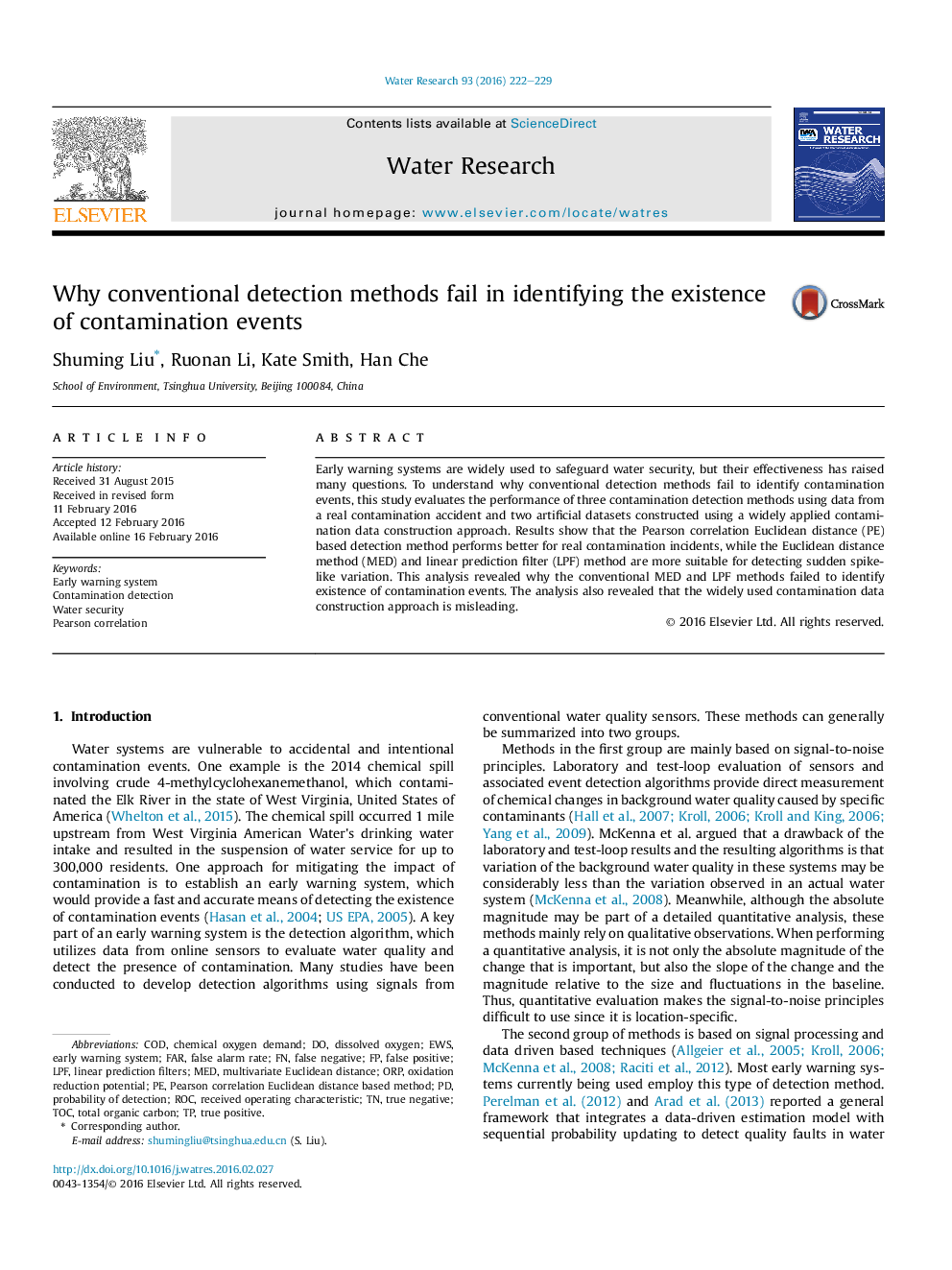| کد مقاله | کد نشریه | سال انتشار | مقاله انگلیسی | نسخه تمام متن |
|---|---|---|---|---|
| 4480953 | 1623075 | 2016 | 8 صفحه PDF | دانلود رایگان |
• The widely used contamination data construction approach is misleading.
• Conventional methods are more suitable for detecting sudden spike-like variation.
• MED and LPF methods failed to detect block-like variation in real events.
• PE method performed better than MED and LPF methods when applied to real event data.
Early warning systems are widely used to safeguard water security, but their effectiveness has raised many questions. To understand why conventional detection methods fail to identify contamination events, this study evaluates the performance of three contamination detection methods using data from a real contamination accident and two artificial datasets constructed using a widely applied contamination data construction approach. Results show that the Pearson correlation Euclidean distance (PE) based detection method performs better for real contamination incidents, while the Euclidean distance method (MED) and linear prediction filter (LPF) method are more suitable for detecting sudden spike-like variation. This analysis revealed why the conventional MED and LPF methods failed to identify existence of contamination events. The analysis also revealed that the widely used contamination data construction approach is misleading.
Figure optionsDownload high-quality image (481 K)Download as PowerPoint slide
Journal: Water Research - Volume 93, 15 April 2016, Pages 222–229
